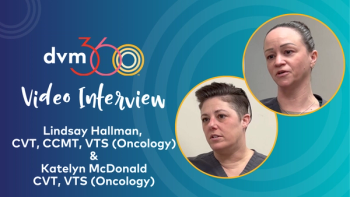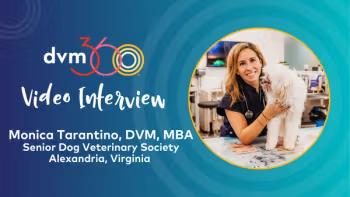
Challenges with Performing Cytology in the Veterinary Practice
Anne Barger, DVM, MS, DACVP, clinical professor in pathobiology at University of Illinois, outlines common challenges associated with performing cytology in the veterinary practice.
Anne Barger, DVM, MS, DACVP, clinical professor in pathobiology at University of Illinois, outlines common challenges associated with performing cytology in the veterinary practice.
Interview Transcript (slightly modified for readability)
“The lab that I work at [gets] a lot of samples from outside [sources]. And so, what we see a lot of times is that the veterinarian that has aspirated the sample and submitted it has stained a slide in-house and they’ve had trouble recognizing what cells are there; that’s because the sample isn’t stained appropriately. If it’s under-stained, a lot of times all the cells will look kind of uniformly pink or really pale or you won’t see the nice contrast between nucleus and cytoplasm. That makes it really hard to recognize what you’re evaluating, and I think that’s an important thing to think about.
The other thing [that] I see a lot is when a slide is prepared, the sample is sprayed on the slide, and then it’s not smeared. And so, you get this thick tissue droplet of stuff and then stain it and try to look at it; well, if it’s too thick, we can’ tell one cell from another, [and] we can’t make out the morphology of what we’re looking at. That’s another problem that I see.
Those pitfalls are super easy fixes, right? One thing that we can do is, if you stain a slide and look at it under the microscope and you don’t see a nice, purple nucleus and a nice, blue cytoplasm, stain it again. You’re not going to hurt anything by staining it over; that’s the nice thing abou [the] Diff-Quick, [which] is the kind of stain that’s used in-house, and [it’s] super easy just to stain it again. That’s really an easy fix.
There are CE events for cytology, but also for oncology where people talk about how to aspirate, how to prepare slides, how to make the smears, the pluses and minuses of different smearing and aspiration techniques. The textbooks, have that information as well. That information is available and practice makes perfect; the more slides that you make, the more masses that you aspirate, the better the sample is that you’re going to get.”
Newsletter
From exam room tips to practice management insights, get trusted veterinary news delivered straight to your inbox—subscribe to dvm360.





